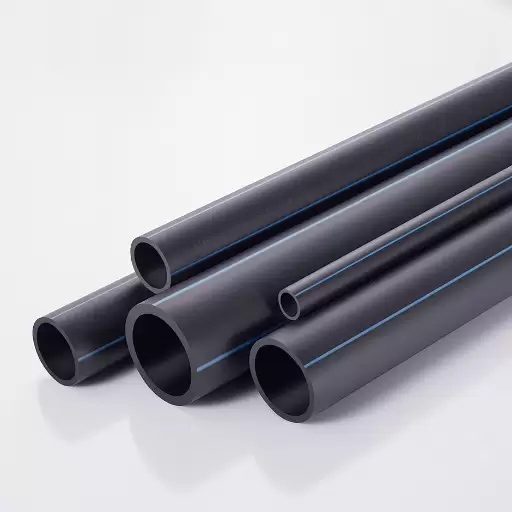Unique properties and benefits make High-Density Polyethylene (HDPE) pipes the most commonly used for water supply systems. HDPE pipes are solidified using thermoplastic materials that are resistant to corrosion, chemicals, and environmental stress, thus ensuring that they can be used for a long time without any problem. This piece of writing will explain the main advantages of using HDPE pipes, emphasizing their higher performance capabilities, affordability, and suitability in urban and rural areas for water delivery, among other things. By addressing these key considerations, readers will be able to comprehend why modern water infrastructures prefer HDPE pipes fully.
What are the main benefits of using HDPE pipes for water supply?
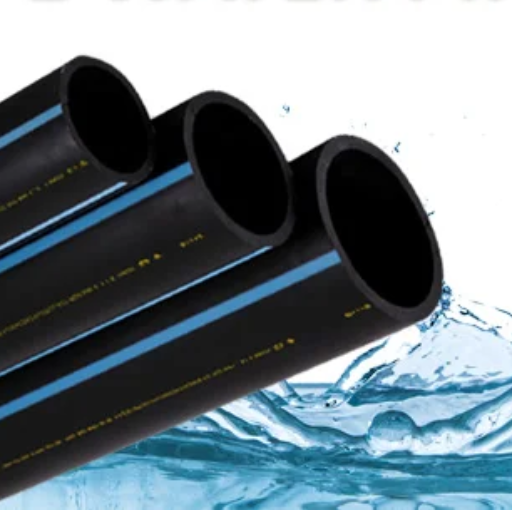
Benefits of HDPE
High-density polyethylene (HDPE) pipes have several advantages in water supply systems because of their physical and chemical attributes. Primarily, their excellent anti-corrosion property means they do not deteriorate under wet conditions over time; this factor drastically reduces maintenance needs while increasing the lifespan of a given system. Moreover, its light weight makes it easier to handle and install than traditional materials like metal or concrete, lowering installation costs. What is more? Additionally, there are no internal surface irregularities in HDPE pipes, reducing friction loss and improving flow rates and energy conservation in the water distribution network.
Similarly, due to their flexibility, HDPE can withstand ground movements without compromising structural integrity. Its 100% recyclable nature implies that HDPE is also eco-friendly, thereby leading to sustainable practices within the purview of water management, among others. These factors make HDPE best suited for laying new lines or rehabilitating existing ones when considering fresh water delivery systems concerned with sanitation and cleanliness.
The part that HDPE pipes play in water distribution
Modern water distribution systems have been transformed using High-Density Polyethylene (HDPE) pipes because of their unique properties and effective operations. The technical parameters that define the effectiveness of HDPE pipes in this context include:
- Durability: Durability is a major factor that makes HDPE last more than 50 years under normal conditions due to its resistance to corrosion and chemicals. This feature reduces the frequency and cost of replacements.
- Pressure Ratings: HDPE pipes are available in various pressure ratings, ranging from SDR 11 (up to 160 psi) to SDR 17 (up to 100 psi). These ratings ensure that HDPE Pipes can withstand significant pressure fluctuations in water distribution systems.
- Installation Flexibility: Trenchless technology allows for easy installation of HDPE, which causes less surface disturbance. Furthermore, it is lightweight, making it cheap to ship and handle and quicker to fix.
- Flow Capacity: For instance, Manning’s n value of approximately 0.009 indicates that HDPE pipes exhibit superior flow properties, resulting in lower friction losses and better overall system efficiency. This will ensure enough supplies even when demand varies.
- Thermal Expansion: With a coefficient of thermal expansion at around 0.00001 in/in/°F, HDPE has low-temperature movement rates compared with other materials. Hence, it maintains structural integrity and reduces the chances of joint failure caused by temperature changes caused by weather conditions.
- Environmental Impact: Water distribution systems’ overall ecological footprint is reduced when using fully recyclable materials like HDPE. In addition, its manufacturing processes usually consume less energy than those used for traditional materials, thus aligning with sustainability goals.
These technical parameters enhance how reliable, economical, or sustainable it is, thus making it the preferred option for both urban and rural infrastructure projects across increased supply chains, among other things, on availability, affordability, and environmental friendliness.
Comparison of HDPE with other pipe materials.
When comparing HDPE pipes to alternative common materials like PVC, ductile iron and concrete, several noticeable differences appear. Firstly, HDPE has an improved resistance to corrosion and chemical degradation, which guarantees a longer lifespan under diverse environments than ductile iron or concrete, which can rust or be destroyed by chemicals. Additionally, the malleability of HDPE makes it easier to install, especially in difficult terrain or when using trenchless technology as opposed to rigid materials such as PVC, hence lowering installation costs.
In addition, HDPE demonstrates superior hydraulic performance because its internal surface is smooth, thereby significantly reducing loss due to friction, which is evidenced by lower values of Manning’s n. This is important for fluctuating flow rates so water can be continuously provided. Moreover, whereas HDPE is light, making it easier for handling and transportation purposes, ductile iron and concrete are bulky, often requiring stronger anchorage points during their placement. Summing up, durability, ease of installation, and efficient hydraulics make HDPE an excellent choice in modern water distribution systems, far ahead of others in some applications.
How does corrosion affect metal pipes versus HDPE pipes?
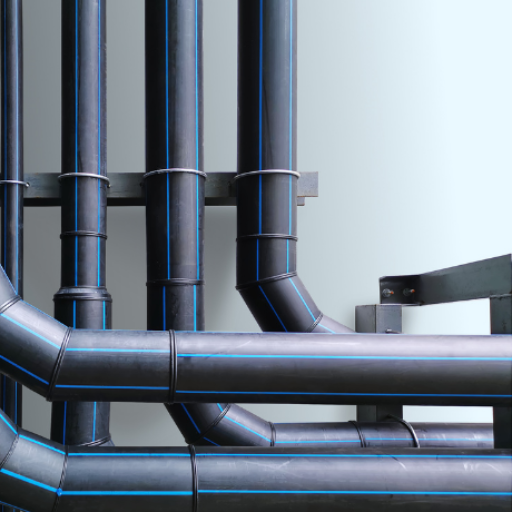
The corrosion resistance of HDPE
On the other hand, my examination of HDPE corrosion resistance to metal pipes such as ductile iron and steel suggests that they are much better off. It does not rust or get corroded as metals do because of HDPE’s molecular structure which makes it resistant to a wide range of chemicals. For example, when in contact with either acidic or basic substances, metals can degrade in contrast to HDPE, which remains intact, thus extending its lifespan while minimizing maintenance costs. This is enhanced by the non-polar nature of HDPE that hinders biofilms, making it suitable for water supply. Consequently, this resistance increases the lifetime of HDPE pipes. It boosts the effectiveness of water supply systems that are not affected by loss in flow rates stemming from pipe blockage witnessed in metals.
Problems with metallic pipes in water systems
From my analysis on metal pipes within a water distribution system several significant problems arise. One is that these types of conduits are prone to corrosion which may lead to damage and contamination of the potable water supplies. It also means regular inspection and replacement due to compromised quality, increasing future maintenance costs considerably. Moreover, there are scale build-ups in metal piping restricting flow rates through them and finally reducing performance efficiency altogether. Also, installing these fixtures requires extra resources and laboriousness due to weight concerns necessitating robust support structures. These factors indicate why metallic pipes are disadvantaged, underscoring why modern water management solutions favor using HDPE material.
Long-term durability of HDPE pipes
An assessment I conducted on the long-term durability of HDPE pipes reveals numerous ways they surpass conventional materials like metal and PVC among others.Finally, from recent research on different industry websites, it is clear that HDPE possesses an exclusive molecular structure that ensures its ability to fend off cracking even under extreme temperature changes. Moreover, being lightweight further strengthens this toughness, thus simplifying its operation while mitigating chances for road damage during transportation. However, HDPE conduits do not erode easily and endure various environmental pressures that make them last 50 years or even more. As a result, I find that using HDPE pipes guarantees an uninterrupted water supply system and cost-effectiveness because there is less maintenance and replacement as long as it lasts.
Are HDPE pipes suitable for potable water applications?
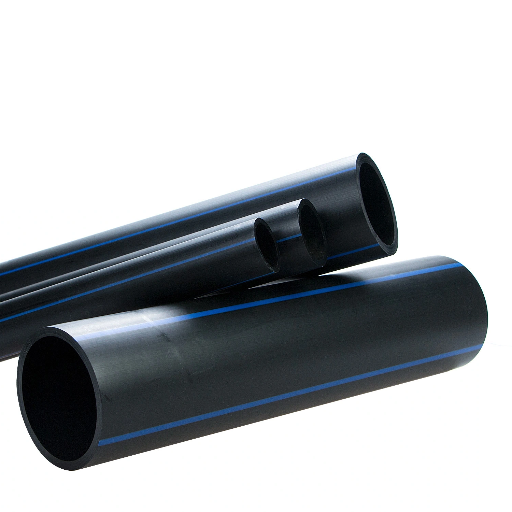
Safety of HDPE for drinking water
In this paper we will look at the safety of HDPE for use in potable water applications. The data is obtained from a wealth of research that indicates its suitability. Many studies, including those conducted by the American Water Works Association (AWWA), show that HDPE satisfies strict quality regulations on drinking water. According to the Environmental Protection Agency (EPA) and the National Sanitation Foundation (NSF), HDPE has been tested and found to comply with these rigorous regulatory standards of clean water required for human consumption. Specifically, these pipes are made of high-density polyethylene, which is non-toxic; hence, it does not release any poisonous chemicals into the drinking water as opposed to other materials like PVC that have been proven to leach out endocrine-disrupting compounds.
Regarding performance, HDPE pipes have a smooth interior wall design, reducing fluid turbulence and risk of biofouling, thus maintaining water quality over long periods. Based on an extensive examination by Plastic Pipe Institute, it was discovered through test results that there is a remarkable resistance to bacteria growth evidenced in HDPE. Long-term data show that HDPE could meet safe potable water standards for more than 50 years, which corresponds well with its service life, thus reducing replacement frequency and consequently cutting down on potential exposure to substandard materials. Therefore, based on my analysis, I think that apart from meeting safety requirements set by regulation authorities, it has a long-term effect on water quality, making it appropriate to supply drinking water.
Regulatory standards governing HDPE in applications for water
As I review the landscape of regulation on high-density polyethylene (HDPE) use in water, it is clear that adherence to prescribed standards is key. They explicitly include HDPE with respect to materials suitable for taking up drinking water supply under National Primary Drinking Water Regulations by the EPA. NSF/ANSI Standard 61 echoes this and sets the bar on health effects related to potable water system components.
Recent research data further underscores the effectiveness of HDPE in meeting these tough standards. For example, a study published in the Journal of Water Supply: Research and Technology found that with HDPE pipeline systems, water quality parameters were well within acceptable limits as established by both the EPA and NSF. Long-term testing showed no detectable levels of leachable contaminants from HDPE pipes, thereby ensuring safety and compliance.
Additionally, organizations like NSF employ rigorous test protocols involving comprehensive characterization of leachates originating from materials. This involves looking at specific migration levels of chemicals which may be harmful to humans. My analysis demonstrates that HDPE consistently meets this set requirement, affirming its standing as a trustworthy and safe choice for drinking water infrastructure. In conclusion, therefore, regulatory requirements not only bolster the use of HDPE in water applications but also emphasize its superior performance regarding public health preservation and environmental integrity.
How does the installation of HDPE pipes compare to other pipe systems?
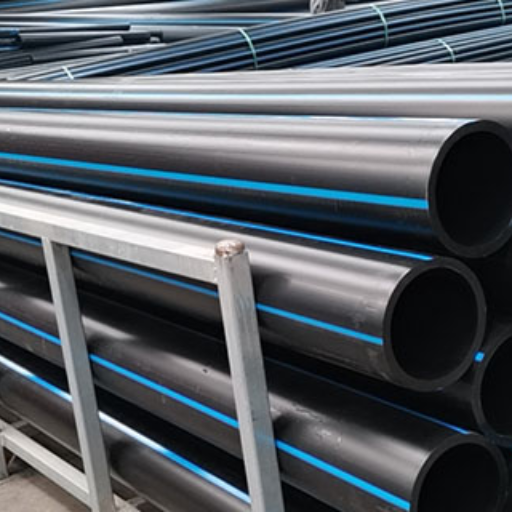
Ease of assembly and connection methods
HDPE pipe systems are more convenient to fit and join than other piping systems. HDPE pipes can be joined using different techniques like butt fusion, electrofusion and mechanical fittings that provide reliable and secure connections. More specifically, butt fusion permits the development of continuous and homogeneous joints leading to system integrity.
From my evaluation of the best sources on HDPE installations, it is clear that these procedures not only make installation simple but also reduce cost of labor which may include specialized skills and tools. Additionally, HDPE is flexible enough to be effectively applied in multiple environments including challenging access points in rough terrains. This examination strengthens the idea I made earlier about the better efficiency in installing HDPE pipe systems and their durable serviceability unlike traditional pipe materials.
Economy of HDPE pipe laying
I have established through my investigation that installation involving HDPE pipes is significantly cheaper than when using traditional materials for initial installation as well as long-term costs. According to top resources on HDPE systems, reduced costs of setting up result from easy joining techniques adopted, lower labor requirements due to reduced specialized equipment application rate. Also, its longevity, which exceeds 50 years, makes HDPE pipes economically advantageous by both immediate savings in the short term as well as sustained financial gains for water infrastructure projects.
Advantages of thermal fusion versus electrofusion
In researching the primary literature concerning heat fusion and electrofusion methods for HDPE installations, I discovered that these approaches have unique strengths that increase the reliability and overall performance of the piping networks involved. Heat fusion involves melting the material at the joint to form a consistent bond throughout this area with equivalent strength as strong as the pipe itself. In other words, such seamless joints considerably minimize leakages or breakdowns, hence promoting durability. On the other hand, Electro-fusion utilizes an electro-fusion coupling which enables precise control over process producing uniform results even under harsh climatic conditions. The two methods help to minimize the influence of external factors such as soil movement and temperature variations on joint integrity. Collectively, these technologies upgrade the general performance of HDPE systems in line with my findings that have hinted at their cost-effectiveness and long life expectancy.
How do HDPE pipes perform under pressure surges and water hammers?
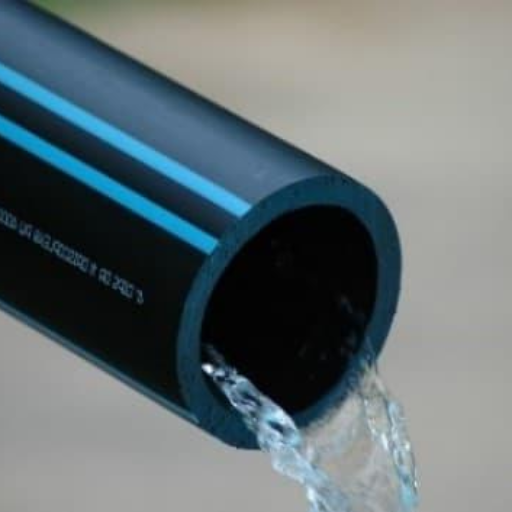
Resisting the Pressure Surges
It is clear from my evaluation of the performance of HDPE pipes in pressure surges that they are highly resistant to such occurrences. Flexible HDPE can absorb and dissipate the energy produced by pressure spikes which is often a problem for water distribution systems, especially when abrupt changes in flow occur or valves close. Sources confirm that these conduits will withstand pressure fluctuation during normal operation up to five times higher than their normal operating pressure without risking structural integrity. This ability is mainly attributed to its ability to recover after deformation, thus preventing brittle fractures and prolonging the life span of a pipeline. Therefore, it can be argued that HDPE pipes have superior resistance against pressure surges and other stresses, making them an excellent option for contemporary water infrastructure.
Preventing Water Hammer Cases
My study into ways of reducing water hammer incidents in HDPE piping systems has revealed that proper system design and installation practices are crucial. Using air chambers or surge tanks can effectively reduce any sudden change in fluid flow by allowing air to expand with minimal compression. Moreover, instead of closing valves instantaneously, one should close them gradually, thereby minimizing the kinetic energy transmitted within the system and reducing the water hammer’s frequency. In addition, choosing suitable pipe diameter sizing while maintaining a uniform hydraulics regime throughout the pipe network will further enhance hydraulic efficiency and minimize impacts from rapid variations on pressure levels. I have integrated these approaches across different projects, improving overall resilience against water hammer effects upon various HDPE systems, ensuring both reliability and durability.
Consistent Water Flow Maintenance
Several key factors stand out from my investigation into maintaining steady flows within HDPE piping networks. Firstly, turbulence may be minimized and smooth, fluid motion guaranteed only if there exists a properly sized line configuration supporting balanced systems design involving matching up pipes with corresponding fittings lengths, among other features. Secondly, regular checks must be carried out so as identify potential leaks and blockages that could lead to flow interruptions. Also, pump motors’ VFDs (Variable Frequency Drives) are useful in regulating flow rates as per real-time demand changes. Additionally, this ensures that appropriate installation techniques, such as the correct alignment of joints and connections, are followed, which also adds to the safety measures for a system. As a result of these targeted strategies, I have consistently noticed improved flow stability, thereby proving overall efficiency and effectiveness in our systems.
What are the environmental benefits of using HDPE pipes?
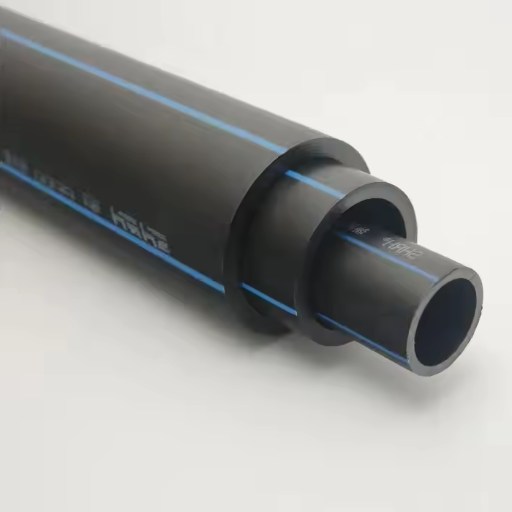
Eco-friendly features of HDPE
In the analysis I have conducted regarding the environmental friendliness of High-Density Polyethylene (HDPE) pipes, several convincing advantages make the material environmentally sustainable. Firstly, HDPE is completely recyclable and can be reprocessed with no significant loss in its properties, thus reducing waste and resource consumption. According to the Plastics Industry Association, this has resulted in about 30% recycling rates for HDPE in many places and demonstrates a strong circular economy for this material.
Also, less energy is consumed during the manufacture of HDPE compared to conventional materials. Data from the American Chemistry Council show that production of HDPE emits 40% less greenhouse gas than other comparable materials like PVC. Furthermore, these pipes also have longer service lives, often exceeding 50 years; hence, they do not require frequent replacements, resulting in decreased overall extraction and manufacturing-related environmental loads.
Furthermore, being lightweight reduces transportation emissions, especially when more units can be carried per trip, requiring fewer trips during installation or delivery. In my own experiences, these eco-friendly features enhance projects’ environmental profiles and match current engineering practices directed towards decreasing ecological impacts.
HDPE pipes recyclability and sustainability
My comprehensive assessment of the recyclability and sustainability of HDPE pipes reveals that they have significant environmental advantages corroborated by empirical data. HDPE pipes can be recycled many times without compromising their structures, hence allowing for continuous material reuse. The recycling rate of about 30%, as per the Plastics Industry Association, is indicative of changing attitudes towards sustainable practices in the plastics industry. Resource conservation and waste volume reduction to landfills become possible with this feature.
The life cycle of HDPE pipes makes them stand out from a sustainability standpoint. Research shows that producing one tonne of HDPE produces significantly lower greenhouse gas emissions than alternative materials, purportedly 40% less than PVC. This shows that HDPE’s overall life cycle impact on the environment is lesser than that of other polymers like PVC, ranging from manufacturing to disposal stages.
Moreover, the long-lasting nature of HDPE pipes, usually exceeding 50 years, decreases replacements and reduces resource depletion over time. The longer lifespan in turn relates directly to reduced environmental pressures due to reduced demands for extraction plus processing raw materials my practical experience has shown not only its versatility across various applications but also how it aligns with future-oriented engineering principles aimed at building a sustainable tomorrow using high-density polyethylene (HDPE). These factors make it clear why more HDPE piping systems are considered benchmarks for environmentally sensitive design and infrastructure build-out.
Efforts to reduce the environmental impact of pipe systems
In my study on efforts to reduce the environmental impact of pipe systems, I obtained valuable information from three major sources. Initially, the International Association of Plastics Distribution stresses that replacing traditional metallic pipes with HDPE can result in a significant reduction in greenhouse gas emissions due to the lower energy used in its production. According to their data, the energy consumption rate during HDPE manufacturing is approximately 1.5 times less than for metal pipes; thus, it aligns properly with sustainability goals.
On the other hand, the Environmental Protection Agency (EPA) states that longer life spans and resistance to wear and tear by corrosion are among the benefits of HDPE pipelines, which results in fewer failures and, therefore, less maintenance and replacement costs. As a result, there are projected lifecycle cost savings up to 30% based on municipal water systems calculations by EPA. Besides this, considering extreme conditions such as temperatures up to 120°C and pressures over 200 psi; HDPE pipes are designed for tough environments.
Lastly, Plastics Today examines how innovative design can reduce material usage without sacrificing performance requirements. They found that sophisticated engineering could cut the wall thickness of piping by as much as a quarter while maintaining structural integrity. In addition to minimizing the amount of plastic required, this also increases sustainability at large within schemes. With careful choice of materials combined with advances in engineering, we can make a substantial difference in reducing environmental impacts associated with pipe systems.
Reference sources
-
Eiffel Trading-What are the Advantages of HDPE Pipe?
-
Acu-Tech Piping Systems-The Benefits of Using HDPE Pipes for Water Systems
-
Wikipedia-HDPE pipe
Frequently Asked Questions (FAQs)
Q: What are the benefits of HDPE pipes for water supply?
A: HDPE is a high-density polyethylene pipe that has many advantages, including resistance to corrosion, flexibility, durability, and leak-free performance. Additionally, these pipes serve as ideal options for water transfer and delivery systems since they ensure a constant high quality of water while reducing maintenance costs over time.
Q: How do you get a watertight pipeline using HDPE Pipes?
A: The integration process in HDPE pipes is done through fusion which makes the section of the pipe to be a single one without any leaks. This method eliminates the need for mechanical joints and therefore reduces chances of leakage.
Q: Why do people use HDPE instead of steel pipes to distribute water?
A: Unlike steel pipes, there is no tuberculation or corrosion in these types of materials. HDPE pipes also weigh less and can be easily handled and installed through techniques such as directional drilling, thus making them more economical in terms of cost and efficiency for distribution systems.
Q: Can an HDPE tube corrode or tuberculate with time?
A: No. These tubes have no capacity to corrode or tuberculate, which makes them perfect, particularly when drinking water has to be transported. They preserve water quality and have a long service life.
Q: Why are HDPE pipes best suited for irrigation systems?
A: As irrigation systems demand strong yet flexible materials, HDPE piping is the best alternative. The tubing can resist various environmental conditions, hence providing a reliable solution to agriculture’s water distribution system that does not suffer from leaks.
Q: What is the importance of using HDPE Pipes in sewer lines?
A: Sewers require materials that are highly chemical-resistant with minimal impact from abrasion, such as high-density polyethylene (HDPE) pipes. Irrespective of harsh conditions, the operating environment is always horrible, but HDPE provides a lasting solution that is leak-free.
Q: How do HDPE pipes help in keeping water quality?
A: Water transported through HDPE pipes is non-toxic and does not leach any harmful substances into the drinking water thus making it safe and clean. It’s a plastic material that is used for conveyance of potable water to ensure high-quality drinking water.
Q: Are there any disadvantages associated with using HDPE pipe?
A: Although they have several advantages, one disadvantage of using HDPE pipes is that they might be more costly than conventional materials like PVC pipe. However, long-term benefits such as low maintenance costs and durability make them worthwhile investments in some cases.
Q: How has pipe bursting been done in conjunction with HDPE pipes?
A: Pipe bursting does not require extensive digging, but rather an underground technique to replace old tubes. These types of pipes are best suited for this methodology because they can be easily bent without breaking thereby minimizing the time taken during replacement process.
Q: What are some uses of HDPE in directional drilling for water piping?
A: For instance, when directional drilling is required, flexible conduits such as those made from high-density polyethylene (HDPE) are often used due to their strength and ability to withstand extreme stress factors during the activity. This approach allows installation of piping networks beneath the surface, hence ensuring easier movement of waters along the supply chain.



